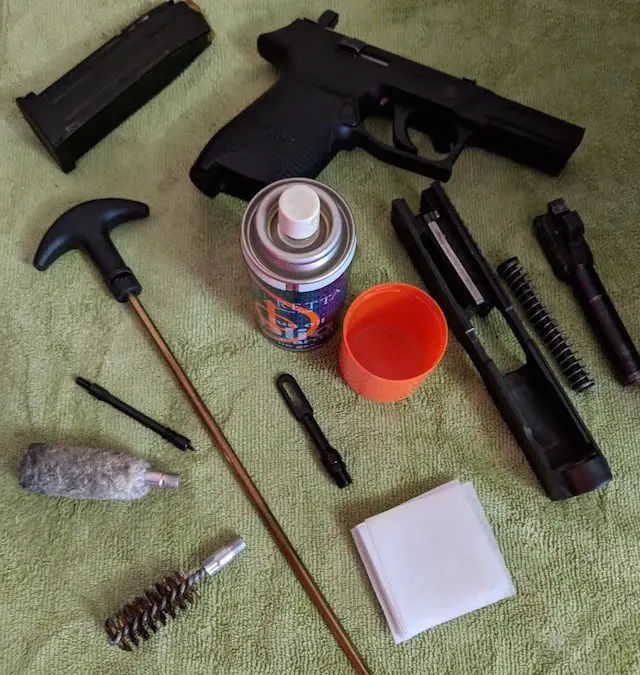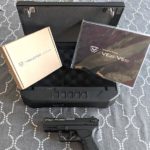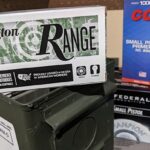Part of having an everyday carry arsenal, is keeping all of the pieces in good working condition. Whether it’s discarding expired medical supplies, evaluating the integrity of your EDC pack, or updating to superior tools — maintenance is key to successful everyday carry. However, the most important piece of your EDC kit to maintain is your firearm. After all, your life may one day depend on it. Rotating your EDC ammo is an important part of firearm maintenance, but not nearly as important as keeping your firearm clean. But, what are the essential gun cleaning supplies?
Once we’ve discussed what exactly you should have in your gun cleaning supplies, we’ll talk about some optional pieces to include in your kit. Furthermore, we’ll talk about how to use some of the items that may not be intuitive. After reading this maintenance tutorial, you should have a firm understanding of what supplies you need in your cleaning kit, and exactly how to use them.
Table of Contents
Essential Components of Gun Cleaning Kit
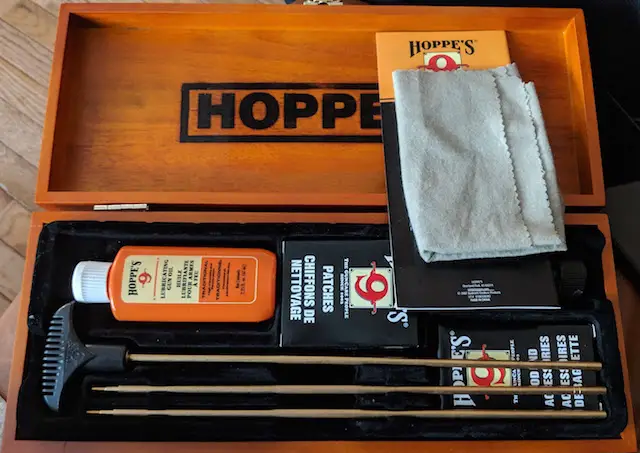
Cleaning Kit Case
Your gun cleaning case will house all of your essential components. Ideally, there will be an organizational system, and will secure all of the pieces in their appropriate places.
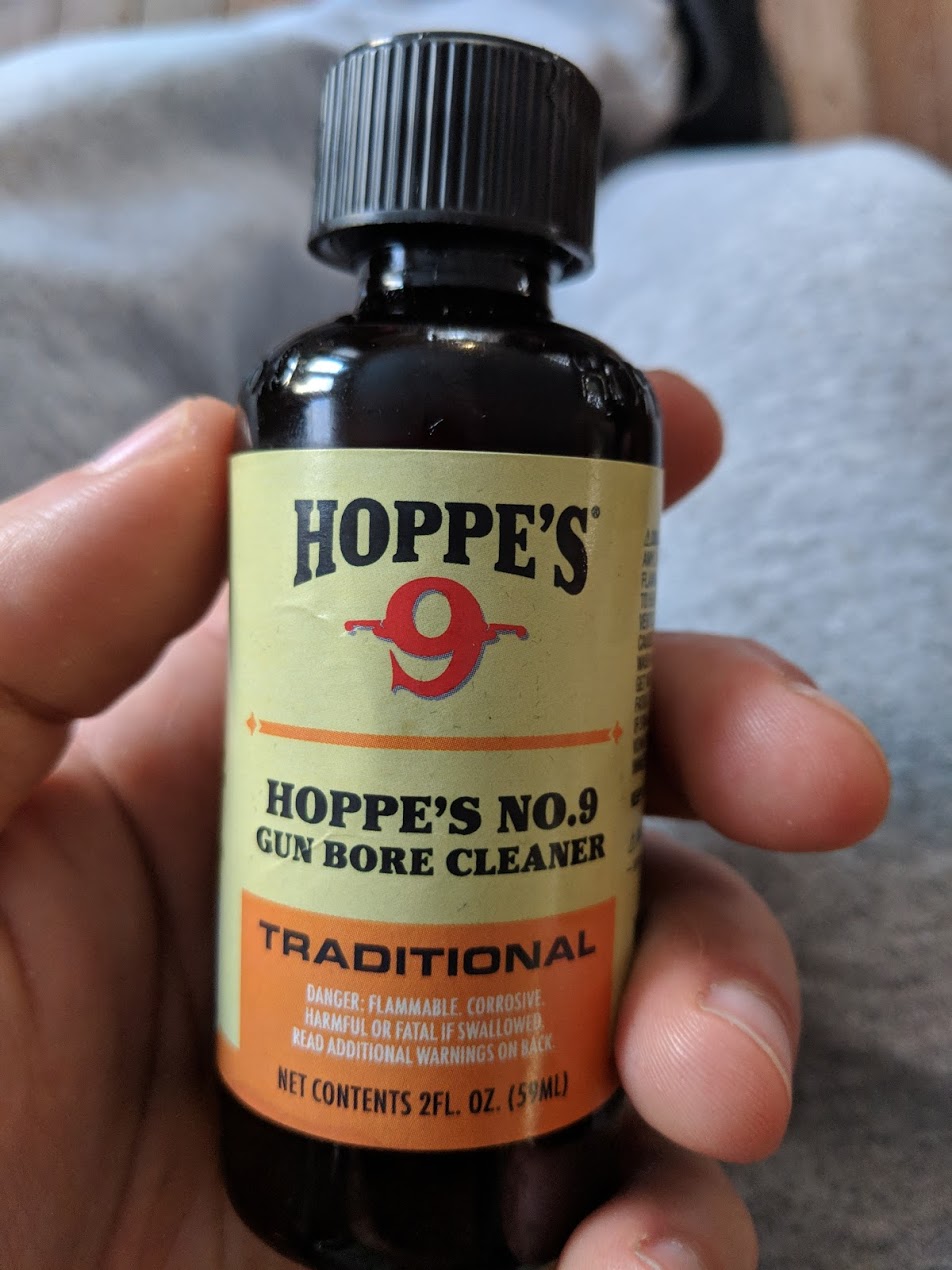
Gun Cleaning Solvent
This is your primary cleaning agent. Use your gun solvent to assist in removing built up carbon, dirt, lead, and other foreign substances from your weapon. Sometimes a gun cleaning solvent will come in an aerosol can, other times not. A de-greaser will assist in removing the excess grease that a weapon has from the factory. However, for general purposes this is not necessary.

Lubricating Oil
Once you have thoroughly cleaned your weapon, the lubricating oil keeps the guns moving parts sliding freely. Some versions also provide rust and/or corrosion prevention.
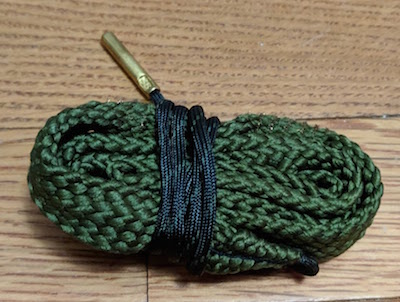
Bore Snake
A bore snake is used as a means to remove the primary buildup in your weapon. This tool is not used for fine cleaning, but is invaluable on the range for quick cleaning of the bore. Bore snakes do not require a weapon to be field stripped in order to be used.

Cleaning Rod
The cleaning rod is used in conjunction with many of the attachments listed below, including the bore jag, slotted tips, and wire brushes. Because of the rod, attachments can run the full length of the bore. Sometimes, cable versions (varying lengths) are provided as opposed fixed length solid rods that thread together.
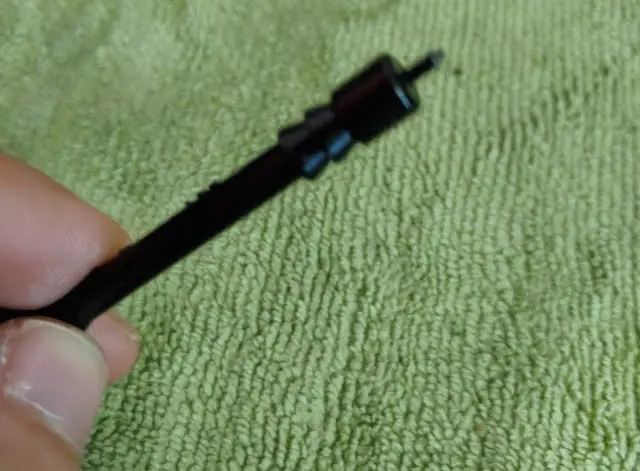
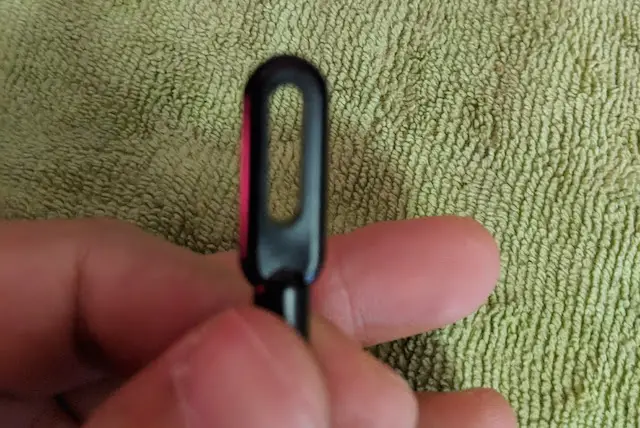
Bore Jag (or Slotted Tip)
Depending on your personal preference, you’ll need either a bore jag, or slotted tip for running your cleaning patches down the bore. See the instructions below for usage, and the benefits and drawbacks of both.

Wire Brush
The wire brush removes excessive buildup from exposed parts of the barrel (such as the feed ramp) where powder residue and other foreign materials can accumulate. These can either be brass or steel.
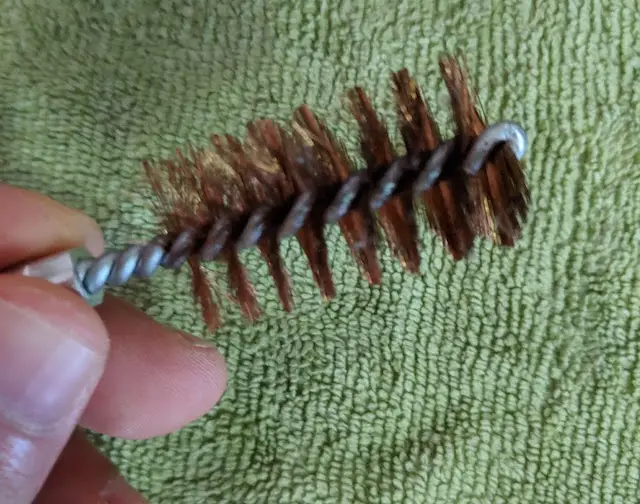
Bore Brush
Another attachment for the cleaning rod, the bore brush is used to remove stuck on grime from your gun’s barrel. This tool is similar to the wire brush, but is used on the interior of the barrel. Comes in different materials with bronze being my preferred material.
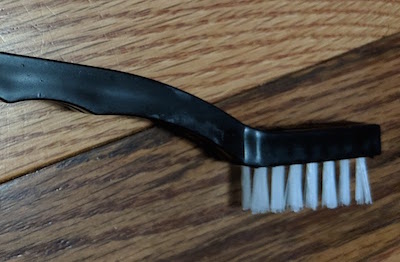
Nylon Brush
The soft bristle nylon brush is good for using on exterior of your weapon to prevent scratching the finish. Nylon brushes do not typically have the rigidity required for scrubbing areas prone to buildup inside the action.
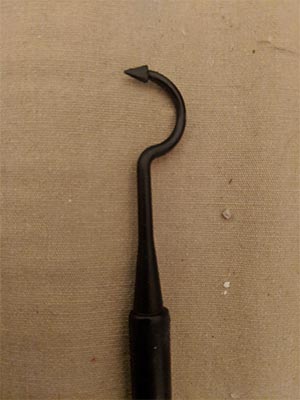
Cleaning Pick
Used to reach and clean crevices on your weapon you otherwise would not be able to reach with a nylon or wire brush. This tool is particularly good for cleaning tight fitting corners.
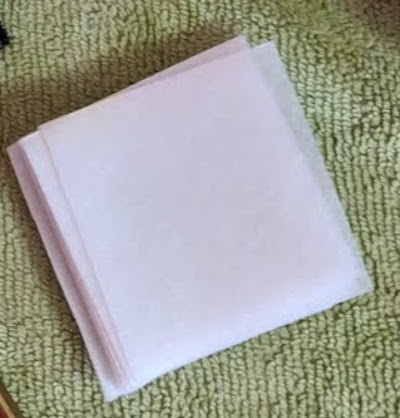
Cleaning Patches
Typically, these cleaning patches are cotton flannel, and come in square or round shapes. Package quantities range from 500 to 1,000. You will go through many of these in the process of cleaning your gun, and therefore they are sold in bulk.
Mat or Microfiber Cloth
A mat or microfiber cloth is essential when cleaning your firearm. Not only does it prevent you from losing smaller pieces of your firearm, but it gives you a soft surface to work on. Having a smooth, soft surface will prevent harm to the exterior finish of your gun.
Optional Components of Gun Cleaning Kit
Q-Tips or Cotton Swabs
Q-Tips are a good tool to have at your disposal because like the cleaning patches, they can soak up the cleaning solvent. However, some users complain about the cotton fibers that can be left behind during usage. Personal preference will dictate whether this becomes an essential gun cleaning supply in your kit.
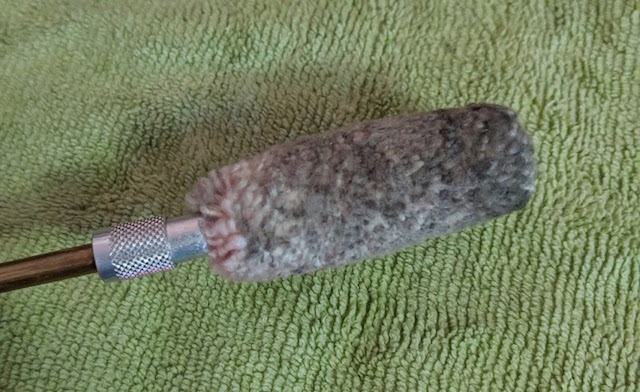
Bore Mop
Some firearms owners use a bore mop in their cleaning process. We’ll cover some of the uses in a later section, but this piece is optional because of the dissenting opinions about it’s usage and usefulness.
Gun Vice
I highly recommend that you have an intimate understanding of the firearm your will be working on. Therefore, you should be able to field strip the weapon in order to clean it. However, for less extensive cleanings, or instances when you will not field strip the weapon, a gun vice provides sufficient access for cleaning and frees up both hands. However, this tool is generally reserved for those doing extensive gunsmithing.
How To Use Your Tools To Clean Your Weapon
Alright, so far we’ve covered the essential gun cleaning supplies (and a few extras) you should include in your cleaning kit. However, now we need to examine how each of these will be used when cleaning your firearm. First, lets discuss when you should clean your weapon and how often. Then, I’ll discuss the process for actually cleaning your firearm, including specific tools on our list that can confuse a first time user. Finally, I’ll address what my personal preferences are, and why I choose certain tools over others.
When To Clean Your Weapon
It should come as no shock, that regular cleaning intervals are important to the overall health of your firearm. However, the frequency of which you carry or use your weapon determine how often it should be inspected and cleaned.
A firearm which sits idly in an office desk drawer is not a susceptible to as much buildup as a weapon that is used for everyday carry protection. Furthermore, and avid shooter, who consistently hits the firing range will need to clean their weapon(s) even more frequently. But, what is the cleaning schedule for each scenario?
How Often Do You Clean A Firearm You Don’t Shoot?
This section is for the gun owner who uses his firearm as a means of home defense. Typically, your firearm stays locked in a safe, or in some hidden compartment and is rarely taken to the range. A weapon that is seldom fired or taken out of storage, should visually be inspected twice a month, and field stripped for cleaning at least once a quarter. However, I recommend that you clean your firearm more frequently, once a month is sufficient.
Because your weapon is seldom exposed to the elements, it is unlikely to have any noticeable buildup of debris. However, you should still visually inspect the firearm periodically to ensure it is still in working condition. Over time, your weapon is still subject to the impact of environmental influence. Things like moisture in the air and buildup of dust and other debris can negatively impact the overall health of your firearm.
How Often Do You Clean Your Everyday Carry Pistol?
A weapon that remains in storage is unlikely to be affected by anything other than environmental factors. However, an everyday carry pistol is subject to a different set of contaminants. So, how often should you clean your EDC pistol? Because of the weapons increased exposure to the elements, it should be visually inspected daily and cleaned at least once a month. Although I recommend a more frequent cleaning schedule of every 2 weeks.
Environmental factors like humidity changes are a concern, but everyday carry firearms are also subject to more frequent handling. Even holstering and un-holstering your weapon at the end of the day can take it’s toll. Lubricating oils can be left on any surface that the gun comes in contact with, including the holster itself. Furthermore, lint and other debris from clothing and outerwear can build up in the hammer. Prolonged exposure to the elements without proper maintenance can result in problems when you need it most.
When Should You Clean A Regularly Used Pistol?
If you use your firearm frequently at the range, then you likely also carry your weapon as well. In addition to cleaning your pistol after every trip to the firing range, you should also clean it once a month at minimum. Because you are subject to the same environmental and handling issues that accompany everyday carry and secured firearms, you should clean it as frequently as those if not more.
Whenever any firearm is fired, powder residue, lead, brass, dust, and a host of other debris can accumulate on your weapon. Cleaning it immediately after means the debris doesn’t have time to settle and harden. A proper cleaning can extend the life of your pistol, and keep it in good working order.
Cleaning Your Firearm 101
Now lets get down to brass tax. Cleaning your firearm can be a relaxing experience, if you know what you’re doing. Knowing the ins and outs of your weapon, and becoming intimately familiar with it, can give you insight on the range should anything go awry. But how exactly do you clean a firearm properly?
Using the following method should keep your firearm working for many years to come.
- Field strip the weapon
- Thoroughly clean the bore
- Lightly oil the bore
- Clean the slide
- Oil the slide
- Clean the frame
- If the trigger assembly can be taken apart, clean the component and oil
These 7 simple steps can take a few minutes, or much longer depending on the current state of your pistol. You won’t know the amount of work until you get into the weeds, and actually field strip your weapon.
How To Use A Bore Snake
A thorough cleaning requires you to field strip the weapon. Although a quick run of the bore snake down the barrel can assist with removing large chunks of debris that is caked on at the range. To use your bore snake, clear the weapon, and open the action on your pistol. Feed the slender end of the snake through the breach and down the bore. Once the slender end comes out of the muzzle, simply pull the string to guide the thicker end of the bore snake down the bore. Once you have done so, take a look down the barrel (from the breach) to ensure you have cleared any obstruction or debris you were targeting. Load up the magazine, and continue putting rounds down range.
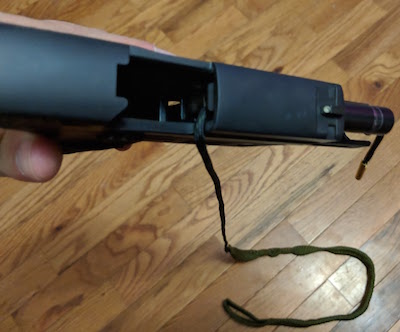

Field Stripping Your Weapon For Cleaning
The first step in the cleaning process is to clear your weapon. To do this you must drop the magazine, or empty the cylinder. On an automatic, you’ll also need to open the action and ensure there isn’t a round in the chamber. Once you’ve done this, you’re ready to begin field stripping — taking apart — the weapon.
You should have clear instructions on hand, or have a knowledgeable instructor with you that can show you how. I’ve got several step by step illustrated instructions for several firearms on the site. If your firearm is not available, please leave a comment and I will acquire one and perform a tutorial.
Cleaning The Bore
Once you’ve field stripped the weapon, it’s time to give it a thorough scrubbing. Typically, I start with the bore, although the cleaning steps are interchangeable. However, most of the debris will build up on the feed ramp, and within the barrel. Furthermore, the heat resulting from a fired weapon means the debris can bake onto the bore. Therefore, this is one of the most difficult parts to clean and likely the dirtiest.
How To Use A Wire Brush
Before you run the cleaning rod down the bore, I recommend using the wire brush to clean the feed ramp on the barrel. Apply a cleaning solvent liberally, and get to scrubbing. It’s worth noting that the wire brush shouldn’t be used on the exterior of the weapon, as it can scratch up the finish.
How To Use The Cleaning Rod
Cleaning rods typically come in several different pieces to accommodate barrels of varying length. One piece will have a handle on the end, the remaining pieces screw in sequentially, to create one long cleaning rod. For the uses of a pistol however, you’ll likely only need the portion with the handle. Several attachments can be screwed into the end of the cleaning rod. Among these are, bore jags, slotted tips, and copper bore brushes.
How To Use Copper Bore Brush
As previously discussed, the bore brush fits into the cleaning rod. This is the primary way to clear debris from inside the barrel. Some people prefer not to use this brush because it seems abrasive, but to clear caked on grime this is the best tool in your repertoire. The brush shouldn’t harm your barrel since the material should be far stronger than the copper of the brushes bristles. Apply cleaning solvent to either the brush or the barrel to assist with cleaning the bore.
How To Use Bore Jags
Once you’ve loosened up the debris, it’s time to actually clear it from the bore. Attach the bore jag to the cleaning rod by screwing in the threaded end. Select the bore jag that matches the caliber of the round the firearm shoots. It should fit snugly into the barrel with a little room to spare, which allows you to attach the cleaning patch.
Next, you’ll need to attach a cleaning patch to the jag. But first, apply cleaning agent to the cleaning patch. Use the pointed tip of the bore jag to puncture a corner of the cleaning patch. This will hold the patch to the jag to ensure it doesn’t fall off as it travels down the barrel. Wrap the jag with the remainder of the cleaning patch.
Whichever direction you wrap the jag in (clockwise or counter-clockwise) is the way you will push and twist the cleaning rod down the barrel. Run at least one patch for each configuration (clockwise and counter-clockwise) to ensure the threading and land of the barrel are both cleaned. Always push the debris toward the muzzle so you aren’t pulling the gunk onto the freshly cleaned feed ramp. Do this until the bore is completely clear and no buildup remains.
Do not use a sawing motion when cleaning as this can result in the patch being dislodged from the bore jag. It also leads to simply spreading the buildup around, rather than clearing the barrel. Put a drop of lubricant on the barrel and run a dry patch down the bore to finish things.
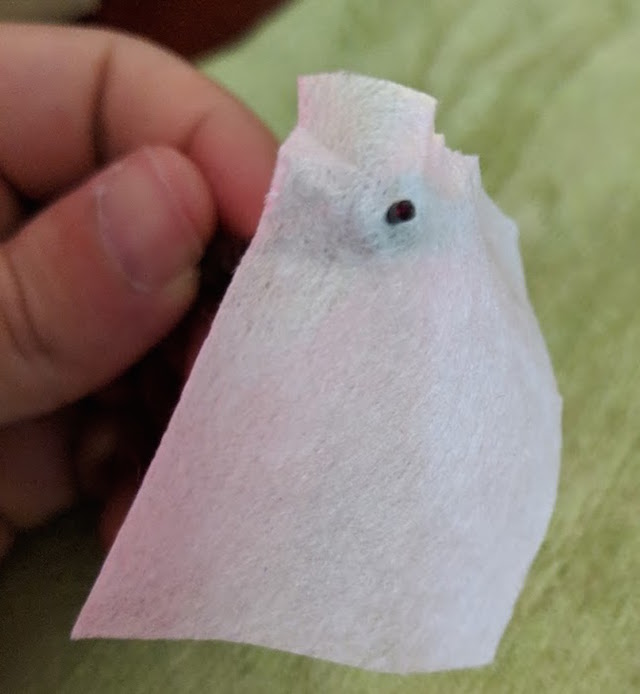
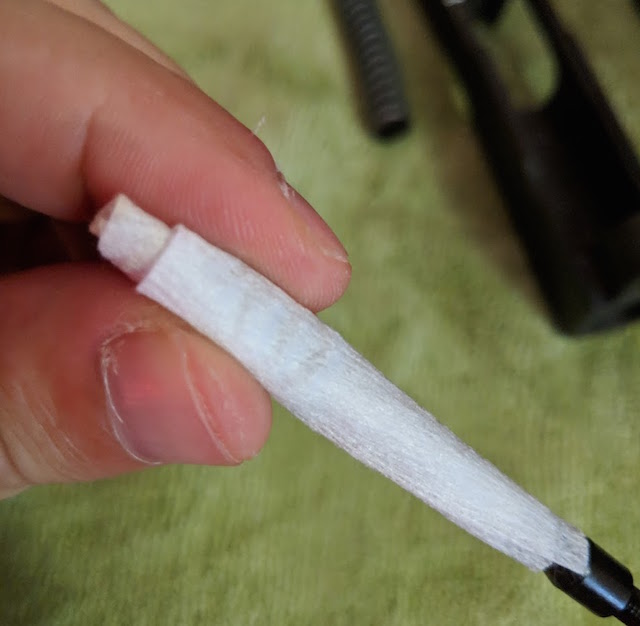
How To Use Slotted Tips
Another option you have when cleaning the bore is a slotted tip attachment. However, I’m not a big fan of this method. First, the attachment is not wrapped in the same manner as the bore jag. Therefore, the metal can contact the inside of the barrel and scratch it. This can interfere with the accuracy of the firearm. Second, the patch does not make solid contact with the entirety of the bore, which can mean that some debris is missed.
If you’d like to try this method, it works similarly to the bore jag. First, coat a patch with cleaning solvent. Then thread the patch through the slot. You’ll have a bow tie shaped cleaning patch at this point. Run this down the barrel in a similar method as the jag. Push and twist the cleaning rod toward the muzzle. Afterwards, use a drop of lubricant in the bore and run a dry patch through it using the cleaning rod.
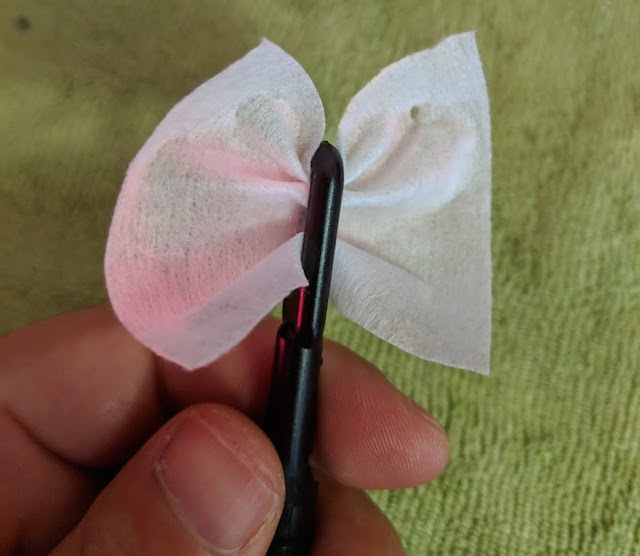
Cleaning The Slide and Frame
Next, you’ll need to move onto cleaning the slide. Use less cleaning solvent and lubricating oil when cleaning and lubing around the firing pin. Ensure to clear any gunpowder residue that may have caked into the corner of the slide before lubricating. Since this is the biggest friction point, you’ll want to make sure the slide moves freely when you are done cleaning and re-assembling your weapon.
How To Use The Nylon Brush
Use the nylon brush to clean the exterior of the slide and or frame. You can also use cleaning solvent to assist, though there shouldn’t be excessive buildup on the outside of the slide.
How To Use The Cleaning Pick
Use the cleaning pick like a dentist would use on your mouth. Chip away at any caked on debris that is in the crevices of your slide. It is also beneficial when cleaning harder to reach places that the cleaning rod cannot assist with.
Firearm Cleaning Preferences
Now that we’ve covered how to use the essential tools, we can discuss a few preferences for cleaning your firearm using the optional equipment. Using these tools is optional and the tools described hereafter are more fringe or limited use.
Jag and Wire Brush Preferences
When it comes to choosing a material, it really depends upon your cleaning preferences. If you have a friend that has a robust cleaning kit, perhaps ask to borrow it to test some things out. I personally prefer using brass jags when cleaning my firearms. You don’t risk the jag bending and binding up in the barrel. Also, plastic jags are prone to breaking. However, use caution when using brass jags so you don’t scar or scratch the rifling of the barrel. Pay attention to the instructions previously provided to ensure a safe and effective cleaning. Similarly, I have had success with the brass wire brush for tackling the feed ramp on my barrel. Only experience will decide what is best for your firearm.
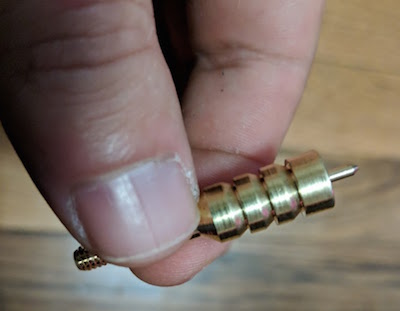
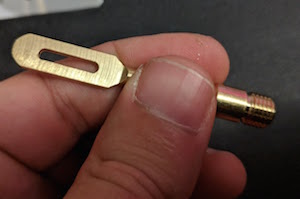
Using The Bore Mop
Bore Mops are the fluffy extensions that can also be screwed into the cleaning rod. I typically use the bore mop as a finishing tool to help soak up any excess lubricating oil. After you’ve lubricated the bore, run a dry bore mop down the barrel. Some users prefer to run a wet mop down the barrel after the bore is clean as a way to lubricate the bore. I find that this can leave behind excess lubricant.
Parting Shots
If you’ve made it this far down the article, you should have more than enough knowledge about maintaining the health of your everyday carry pistol. There are three important takeaways from this article. First, an ounce of prevention is worth a pound of cure and regular maintenance will help extend the life of your firearm. Second, have a thorough understanding of your pistol before you undertake the cleaning process. Finally, don’t over lubricate your firearm. Using excessive amounts of lubricant can actually be detrimental to your pistol.
I always welcome feedback, and if you use a different process, please feel free to leave constructive comments. If you found this information useful, please share it with your friends, family, and fellow firearms enthusiasts. Carry on.
